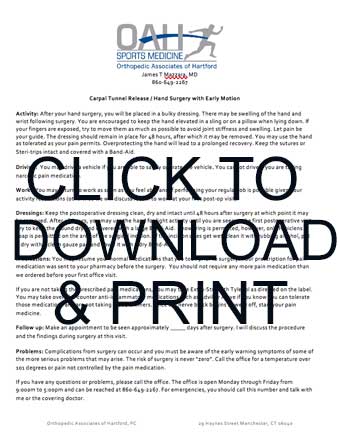Activity: After your ankle reconstruction, you will be given crutches. These must be used to remain non-weight bearing after surgery. Elevation of the leg is important for the first day after the surgery as it helps to reduce the leg swelling. After 1-2 days, if your ankle is feeling good, you may increase your activity level gradually.
Use ice packs to the knee for the first 24-48 hours after surgery. Apply the ice as frequently as needed after surgery. After 24 hours, you may use the ice packs two or more times a day for 20 minutes at a time, if desired for comfort.
Dressings: The post op cast should remain in place until you are seen in the office. Keeping the foot elevated will keep the swelling down and keep the pain under better control. You cannot allow the cast to get wet because the dressing over the incision will also get wet increasing the chances of an infection. Purchase a cast cover at the pharmacy so that you can shower without getting the cast wet.
Some ankle reconstructions will require a cast for 6 weeks with a new cast being applied every 2 weeks. Some reconstructions can be placed into a removable brace at 2 weeks after surgery. When you make you appointment, ask my team to preauthorize the brace so it is ready for application and authorized by your insurance carrier.
Driving: You may drive a vehicle after 72 hours if you are able to safely operate the vehicle. If your surgery was on your left ankle and you have a car with an automatic transmission, you should be mechanically able to perform the functions associated with normal driving. If your surgery was on your right ankle, you cannot drive. You cannot drive if you are taking narcotic pain medication.
Work: Your ability to return to work can be discussed at your first post-operative visit. Keeping the ankle elevated and will reduce the swelling and may reduce the chances of developing a blood clot in your leg and takes priority over returning to work for now.
Medications: You may resume your normal medications that you took prior to surgery. Your prescription for pain medication was sent to your pharmacy before the surgery. You should not require any more pain medication than we ordered before your first office visit.
If you are not taking the prescribed pain medications, you may take Extra-Strength Tylenol as directed on the label. You may take over-the-counter anti-inflammatory medications such as Advil or Aleve if you know you can tolerate those medications and are not taking blood thinners. Once the nerve block begins to wear off, start your pain medicine.
Unless you are allergic, take one aspirin 81mg twice per day to reduce the chances of blood clots. Blood clots may occur after any surgery or injury to the leg and may be associated with complaints of calf pain, calf cramping, pain in back of the knee, chest pain or shortness of breath.
Follow up: Make an appointment to be seen approximately 14 days after surgery. I will discuss the procedure and the findings during surgery at this visit.
Problems: Complications from ankle surgery can occur and you must be aware of the early warning symptoms of some of the more serious problems that may arise. The risk of surgery is never “zero”.
Call the office for a temperature over 101 degrees, pain not controlled by the pain medication, or drainage from the incision that lasts more than 24 hours or calf pain, chest pain, or shortness of breath.
Regular exercise to maintain your leg mobility and strength is necessary. Therapy is an essential part of a good result, but some simple exercises can be started when pain permits within 48 hours of surgery. We recommend that you exercise approximately 20 to 30 minutes two or three times a day. The following guide can help you better understand your exercise or activity program that may be supervised by a therapist at the direction of Dr Mazzara and his staff. As you increase the intensity of your exercise program, you may experience temporary set-backs. If your leg swells or hurts after an exercise activity, you should lessen or stop the activity until you feel better. You should Rest, Ice, Compress (with an elastic bandage), and Elevate your knee (R.I.C.E.). Contact your surgeon if the symptoms persist.
